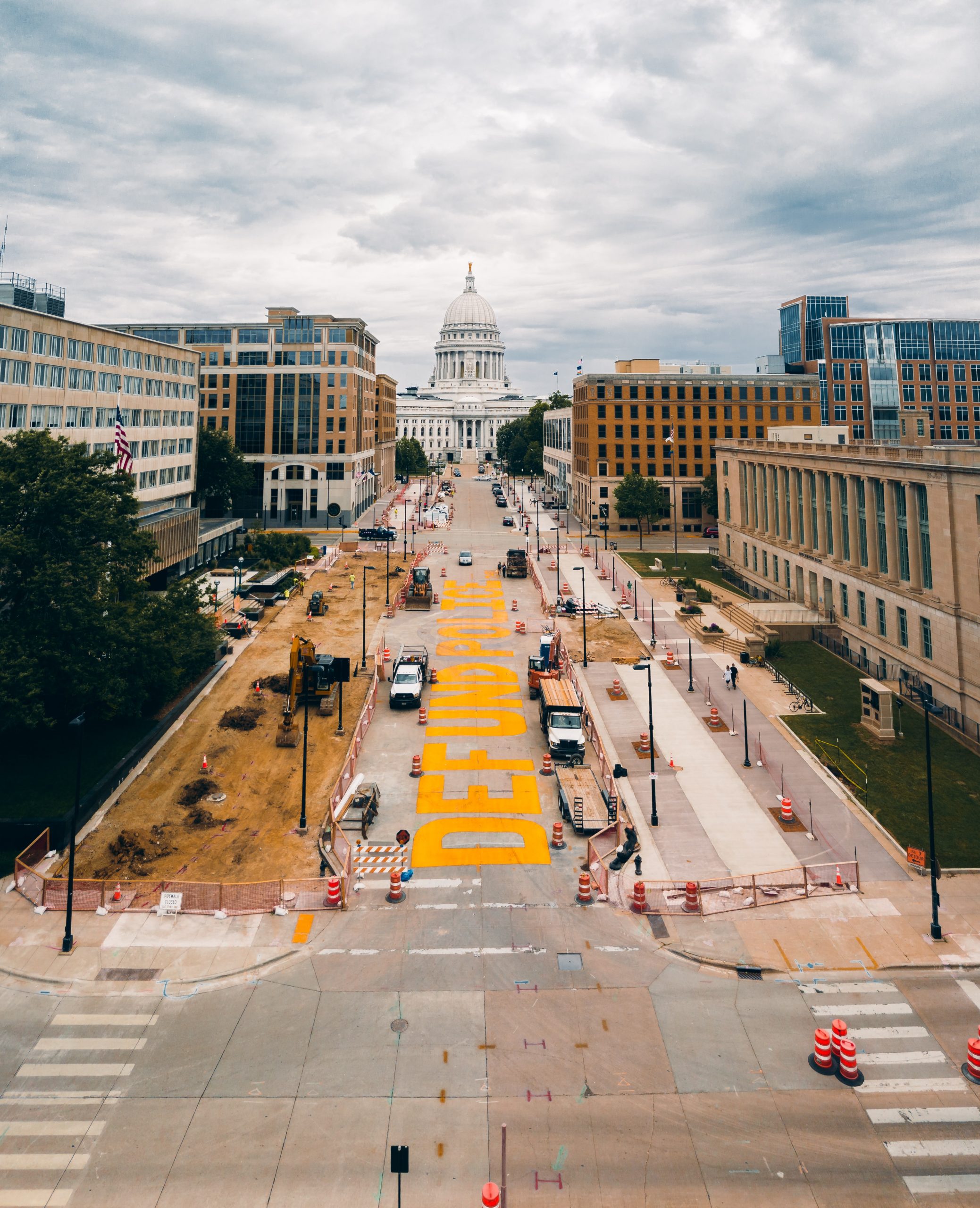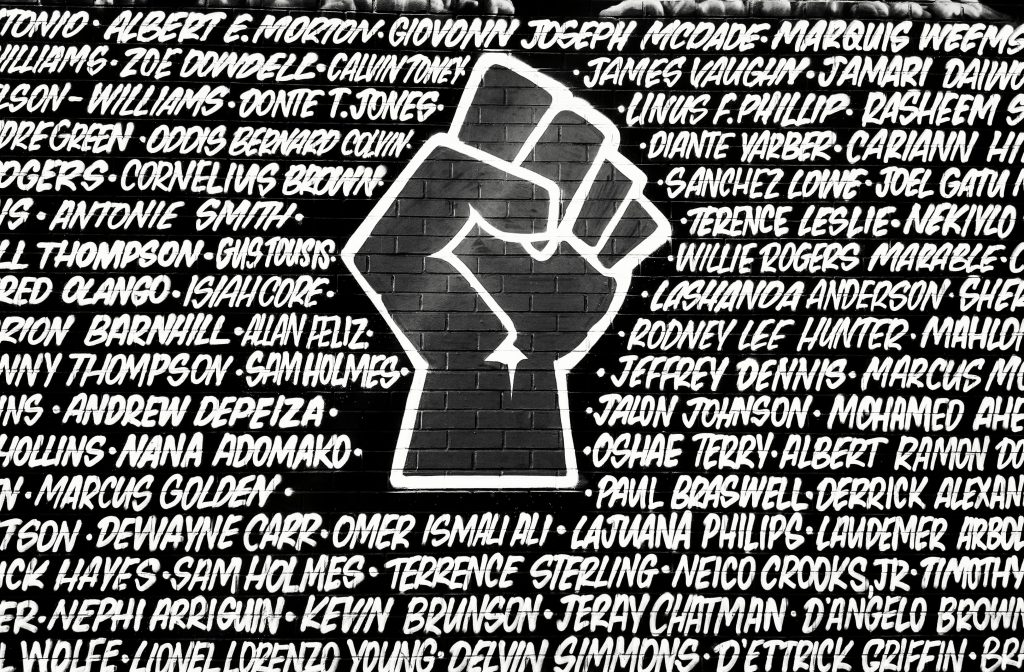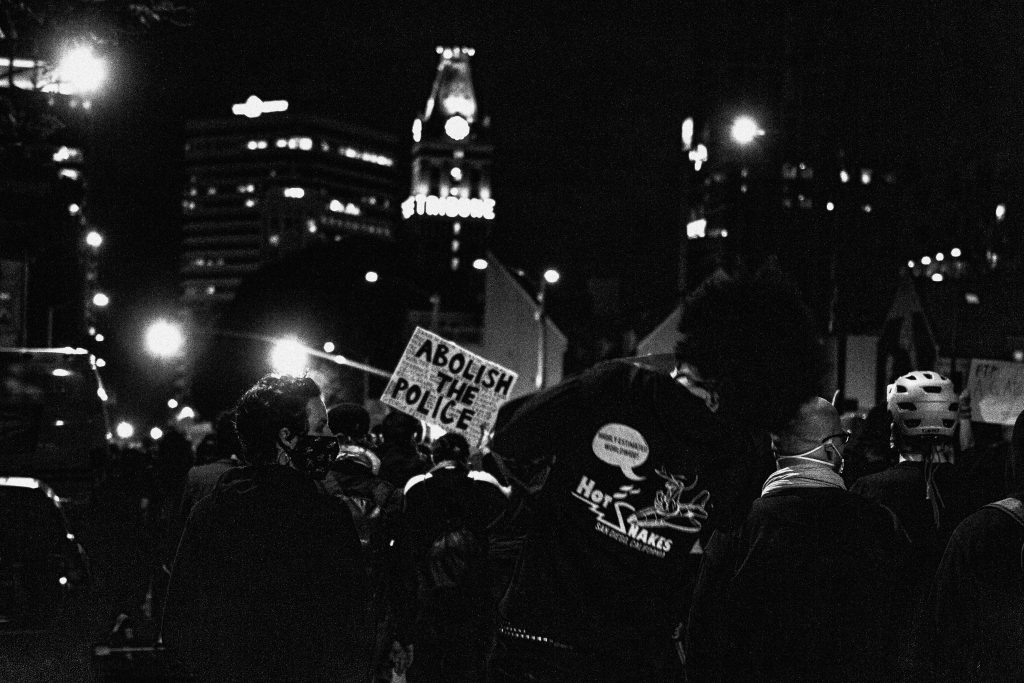
17 Feb NYC Council Candidate Tiffany Cabán Releases Comprehensive Plan to Defund the Police in New York City
Police reform has taken center stage for many Democrats. The two loudest rallying cries are defund the police and abolish the police. At their heart, both of these statements have the same goal: end the carceral state. Moreover, after the 2020 election cycle, many Democrats felt that such a radical approach to police reform endangered their electability. One problem, they say, is that few Americans have a clear concept about what it means to defund the police. Tiffany Cabán has released a detailed plan as part of her campaign for NYC Council District 22. It could serve as a blueprint for policymakers across the country.
Defund the Police Becomes Rallying Cry Amid Protests Against Police Brutality
The last year of former President Donald Trump’s presidency was historic for many reasons. American cities shut down in the battle against a worldwide pandemic. The federal government resumed executions at a startling pace. Protests raged as video after video surfaced of more Black citizens dying at the hands of police. Black Lives Matter filled the streets, and in some cases, painted messages across the pavement.
The resounding cry for police reform echoed from coast to coast. But something about the protests in 2020 felt different. There was a collective and coordinated effort to enact systemic change. Protestors were not merely demanding justice; they were scripting it. Advocacy groups and individuals alike used the momentum driven by protests to articulate concrete needs and a path toward ending the police state. Some explicitly called to defund the police. Others to abolish the police altogether.
“We need real change. That’s why we must stop investing in police and incarceration and instead intentionally invest in alternative models that are centered in community and address the root causes of harm, in addition to making greater investments in schools, health care and other human needs that keep our communities safe,” writes Mary Zerkel for the American Friends Service Committee. Moreover, she outlines several reasons to support defunding the police:
- Policing began as a method to enforce white supremacy
- Police reform methods like body cams don’t work
- State spending on police robs community programs like public education
- Policing doesn’t actually keep Americans safe
- Black leaders are pleading for less focus on policing and more on human needs
- State budgets can be reallocated to address alternatives to policing
The call to defund the police is louder than it’s ever been, but Black organizers have been saying it consistently since the protests in Ferguson, Missouri.
When Mike Brown was killed by Ferguson police, images of the protests filled social media and newsprint alike. It wasn’t the first or even the most flagrant example of police brutality that year. For many, though, it marked a breaking point. Groups like Black Lives Matter lobbied politicians for legislative protections to address police brutality. With former President Barack Obama halfway through his second term, few believed that average Americans would support police abolition.

By the time video of George Floyd’s killing surfaced six years later, police brutality and white supremacist violence had become so omnipresent that even moderates began to seriously consider eliminating government policing. This was, in part, due to increased awareness that policing as we know it is rooted in slave patrols. Many wondered if an institution rooted in white supremacy could truly be reformed, or if a hard reset was necessary. Of course, a lot of allies struggled to understand just what defund the police meant in their everyday lives.
Most Liberals Embrace Defunding the Police in Theory, Struggle with Practical Application
While posts about police abolition garnered thousands of retweets and likes, social media conversations showed a sharp divide between those who like the idea of abolition but are also invested in policing in their daily lives. It’s not surprising. Defunding the police requires a completely new understanding of justice. So when an Instagram user asked U.S. Representative Alexandria Ocasio-Cortez (D-NY) what it looks like to defund the police, she was happy to answer. What she said went viral.
“It looks like a suburb. Affluent white communities already live in a world where they choose to fund youth, health, housing etc., more than they fund police. When a teenager or preteen does something harmful in a suburb (I say teen bc this is often where lifelong carceral cycles begin for Black and Brown communities), White communities bend over backwards to find alternatives to incarceration for their loved ones to ‘protect their future,’ like community service or rehab or restorative measures. Why don’t we treat Black and Brown people the same way?” she wrote.
The Marshall Project put together a timeline, glossary of terms on police reform, and a collection of articles addressing police reform to help readers educate themselves. They note that some things are central to almost all police reform efforts. Among them, a call to end the criminalization of mental illness, poverty and addiction. Defunding the police would allow states to allocate more money to mental health services and rehabilitation centers. Local governments would also have more money to invest in disenfranchised communities.
Black organizers and justice reform advocates recognized a need to help average Americans envision a nation without police.
According to the New York Civil Liberties Union (NYCLU), “Abusive policing and excessive force against Black and Brown people are not exceptions to the norm —they are the norm.” They point out that police budgets continue to increase despite cuts to public education, mental health care and housing programs. The NYCLU argues that communities should limit interactions with police. Like Ocasio-Cortez, they suggest alternatives to police response for mental health and addiction related issues.
Video of a 9-year-old girl being pepper-sprayed by Rochester police in early Feb. 2021 illustrates one key component of defunding the police; medical professionals should respond when someone is having a mental health crisis, rather than police. In the video, officers can obviously be heard telling the girl to stop acting like a child. She reminds them that she is, in fact, a child. True, the girl was a danger to herself and her mother, but she needed help. Instead, the police pepper-sprayed her.

Events like this are incredibly common, and that’s emboldening some political candidates. Even as moderate Democrats in the House and Senate distance themselves from calls to defund the police, leftists are ramping up pressure to abolish police departments at the local and state levels. Tiffany Cabán understands the risk of running on a platform of police abolition. That’s why she’s released a clear and thorough explanation of her stance and how she plans to address community needs.
New York City Council Candidate Hopes to Defund the NYPD
The Democratic party has yet to take an official stance on police abolition. But that hasn’t stopped Tiffany Cabán from designing a 50-page plan to defund one of the most powerful police departments in the country, the NYPD.
“Police are tasked with responding to problems that they are ill-equipped to handle…The modern American policing-prison complex was always been a system of social control designed to facilitate race and class exploitation,” she argues. Her plan is multifaceted. To address community needs, she will prioritize:
- Community Safety Centers
- Integrated Service Facilities
- School-Based Support Instead of Policing
- Non-Police Traffic Safety
- Mental Health Services and Responders
- Civil Life Corps
Cabán goes into detail about each element of her plan. She describes her Community Safety Centers are places to interrupt domestic violence and focus on restorative justice. Integrated Service Facilities would focus on rehabilitation and support for addicts, as well as support for housing and employment. Likewise, Cabán says that “We need school counselors, not cops.” She points out that having a strong police presence in schools doesn’t actually keep students safer. While they receive training to respond to outside violence, officers in schools increases the likelihood that students will be arrested and end up in jail. Instead, her plan says, students need more access to professionals who can help them work through social and emotional issues.
Instead of police, abolitionists point to alternative methods for enforcing traffic laws and responding to community members with mental health needs.
Many traffic stops result in police brutality and even murder. What should be routine, non-violent interactions often escalate. Cabán recommends non-police traffic responders to respond to emergency situations on roadways. She also believes that automated systems could monitor basic traffic violations and take police interactions out of the equation. Her plan has similar goals with mental health responders. Trained professionals, not police, would respond when community members have a mental health crisis. The emphasis would be on getting individuals treatment, rather than putting them in jail. For demonstrations and protests, Cabán would use a Civil Safety Corps instead of police. This corps would have training to deescalate situations and crisis management.
Throughout Cabán’s proposal, the most common objective is limiting police interaction with civilians. While this may seem antithetical to defunding the police, this approach may be easier for voters to digest. Even those who support police abolition can internalize the practical application of her plan. Rather than theory and statistical models, Cabán gives New York City residents a concrete vision for defunding the NYPD. More importantly, she gives skeptics reasonable alternatives to policing. She also understands that the process takes time. “My goal at the end of the day is to ultimately get to a place where we are no longer funding police —period,” she says. Her plan does not get New York City there on Day 1; if anything, it’s a guidepost, a tangible step toward complete abolition.
Cabán’s plan is unrealistic to some, but more than a dozen cities are already enacting similar plans to defund the police.
As of August 2020, 13 cities had announced plans to defund the police. The effort is gradual, as city leaders understand the need for residents to ease toward such a significant shift in their respective communities. Austin, Texas, voted to reallocate one third of its police budget to social programs and violence prevention. Even New York City has already started the process that Cabán has staked her campaign on. Council members voted to cut $1 billion from the police budget and invest $354 million to mental health services, homelessness and educational services.
Critics have been vocal about these local efforts. Seattle Police Chief Carmen Best resigned in protest after the city voted to cut $3.5 million from the police budget. Trump appealed to police unions throughout his failed campaign. Even President Biden said, “No, I don’t support defunding the police.” This shouldn’t come as a surprise given his decision to select former San Francisco District Attorney Kamala Harris as his running mate.
Whether or not the Democratic party decides to embrace a platform to defund the police, it’s clear that Americans are warming up to the idea. It could prove a pivotal issue in the midterm elections. For now, most national candidates are content to toe the line. This is one movement that may grow from the ground up, one city at a time.

